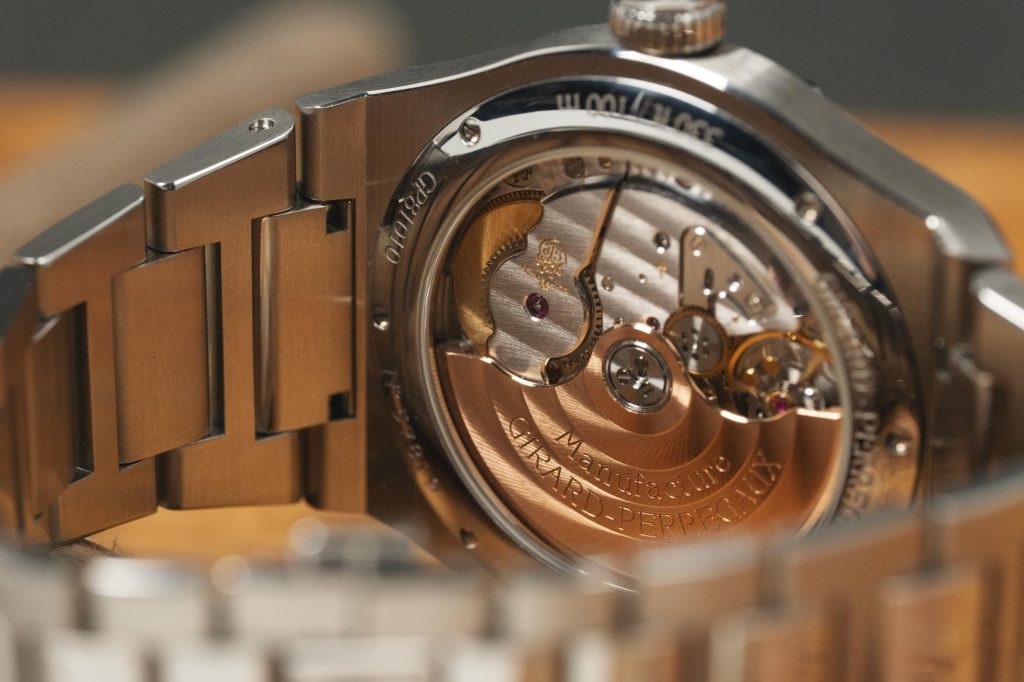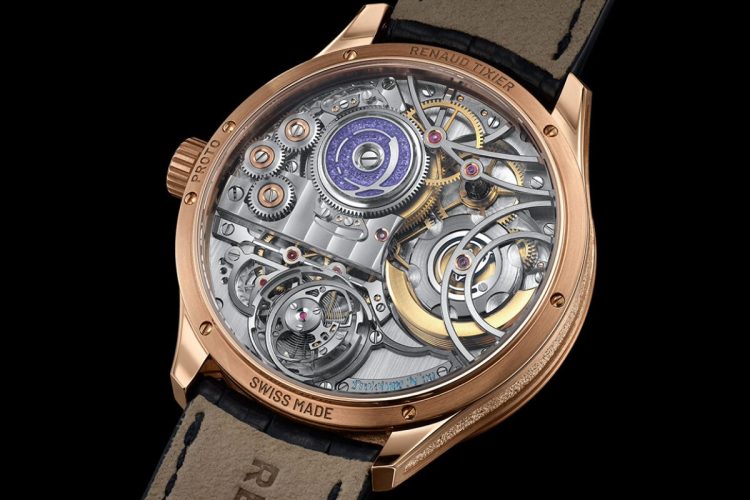The Allure of the Micro-Rotor: Form Meets Function in Compact Complexity
In the world of fine watchmaking, where movement architecture often defines both performance and prestige, the micro-rotor occupies a unique intersection between visual purity and mechanical ambition. While full-sized central rotors have long been the industry default for self-winding calibers due to their high efficiency, micro-rotor movements—those featuring a miniature winding mass recessed into the movement plate—offer an alternative that prioritizes slimness, symmetry, and sophistication. But the question remains: can this aesthetically driven design truly rival the torque, reserve, and robustness of traditional automatic systems?
To answer this, we must understand what micro-rotor technology sacrifices and what it gains. A full-sized rotor, typically a semicircular disc mounted centrally above the movement’s gear train, benefits from its large mass and greater radius. This allows for more kinetic energy to be converted into winding force with minimal wrist movement. A micro-rotor, in contrast, is significantly smaller and integrated into the movement plane itself. This preserves vertical space and reveals more of the movement’s mechanical artistry, but naturally presents challenges in winding efficiency.
In theory, with the right mass material (often tungsten, gold, or platinum for density) and bearing design, a micro-rotor can match the output of a larger rotor. In practice, though, not all implementations are equal—and execution matters far more than the concept. That’s why brands like Piaget, Laurent Ferrier, and Bulgari have spent decades refining their micro-rotor calibers into icons of both design and mechanical ingenuity.
Technical Foundations: How Micro-Rotors Generate Power
The basic operating principle of a micro-rotor is identical to that of a standard rotor: it rotates with wrist movement, which winds the mainspring via a ratchet mechanism. The challenge lies in the geometry and torque conversion. Because the micro-rotor spins with less leverage, it must rotate more frequently—or be more massive—to deliver equivalent energy. Brands often compensate by increasing the rotor’s inertia using dense metals and ensuring the gear train’s efficiency through fine-tuned tolerances and low-friction materials.
Most modern micro-rotors employ unidirectional winding, reducing drag and ensuring that every spin contributes to power buildup. Some use ceramic ball bearings to reduce wear, and others adjust the gear ratios to allow more rotations of the rotor per unit of wrist motion. These small improvements collectively allow a well-executed micro-rotor to deliver power reserves on par with traditional systems—typically 48 to 72 hours—without compromising reliability.
But a poorly engineered micro-rotor can become problematic. Underpowered winding, difficulty staying topped up during low activity, or excessive wear due to inadequate materials can compromise both timekeeping and longevity. As such, the technology tends to be reserved for high-end movements where meticulous construction justifies the added complexity.

Brand Comparisons: Piaget, Laurent Ferrier, and Bulgari
No discussion of micro-rotor excellence would be complete without examining the brands that have made it their signature. Each approaches the design from a distinct philosophical angle, illuminating the micro-rotor’s versatility.
Piaget, renowned for ultra-thin watchmaking, pioneered the use of micro-rotors as early as 1960 with the caliber 12P. Its successor, the 1200P, still stands as one of the thinnest automatic movements ever made at just 2.35mm thick. The 1200P’s platinum micro-rotor is beautifully integrated into the baseplate, allowing Piaget to create ultra-slim watches like the Altiplano without sacrificing self-winding capability. Here, the focus is clearly on elegance, with efficiency playing second fiddle. Yet the movement still manages a respectable 44-hour power reserve.
Laurent Ferrier takes a different approach. Its FBN229.01 movement, found in models like the Galet Micro-Rotor, combines a gold micro-rotor mounted on a silent block shock-absorbing system with a double direct-impulse escapement inspired by Breguet. The result is a smooth, consistent winding mechanism that maximizes wrist motion efficiency while providing high chronometric performance. With a 72-hour power reserve and understated finishing, Ferrier proves that micro-rotors can coexist with true horological sophistication.
Bulgari, meanwhile, has leveraged micro-rotor technology to pursue modern engineering aesthetics. Its Octo Finissimo Automatic, equipped with the BVL 138 caliber, measures just 2.23mm thick—thinner even than Piaget’s. The movement uses a platinum micro-rotor offset to preserve symmetry while achieving a 60-hour power reserve. It’s a triumph of industrial design, pairing avant-garde geometry with mechanical minimalism. Bulgari’s emphasis isn’t just on beauty or heritage but on technical boldness and lifestyle integration, appealing to a younger, design-forward collector.
The Aesthetic-Mechanical Tradeoff: Who Is the Micro-Rotor For?
Micro-rotors invite a unique philosophical decision from both the watchmaker and the wearer. They allow for slimmer profiles and uninterrupted views of the movement architecture, aligning with a desire for transparency and purity. For those who believe a watch should be as beautiful on the back as it is on the front, the micro-rotor becomes the preferred tool—it hides its function without dulling it.
But this comes with tradeoffs. The torque generated is generally lower, meaning that under high complication loads (e.g., perpetual calendars, tourbillons), a micro-rotor may need supplementary design tricks to remain effective. Additionally, because the rotor sits within the movement plate rather than above it, the available real estate for other components is reduced. This often forces movement designers to adopt unconventional layouts, which can complicate servicing and limit future modularity.
From a user perspective, the question becomes one of priorities. If your lifestyle is highly active and you desire maximum winding reliability, a full rotor may still be preferable. But if your heart leans toward aesthetics, craftsmanship, and discretion, the micro-rotor offers a kind of mechanical poetry unmatched by any other winding system. In many ways, it’s the connoisseur’s rotor—subtle, rare, and quietly powerful.
Conclusion: A Matter of Mastery, Not Compromise
So can micro-rotor movements deliver the same power as full rotors? Technically, yes—but only when executed with extraordinary precision and intent. The best micro-rotor calibers rival their full-rotor cousins in power reserve and reliability while offering aesthetic and ergonomic advantages that are impossible with standard automatic layouts.
More importantly, micro-rotors serve as a statement. They declare that a watchmaker is not simply filling a case with gears but composing a mechanical sculpture. They demonstrate that a collector values more than timekeeping—they value ingenuity, restraint, and the art of hiding complexity in plain sight.
In today’s landscape, where wristwatches are as much expressions of identity as they are tools for time, the micro-rotor stands as a symbol of refined taste. And while it may never fully replace the full rotor in mass-market applications, it will always occupy a place of honor in the upper echelons of haute horlogerie.





































